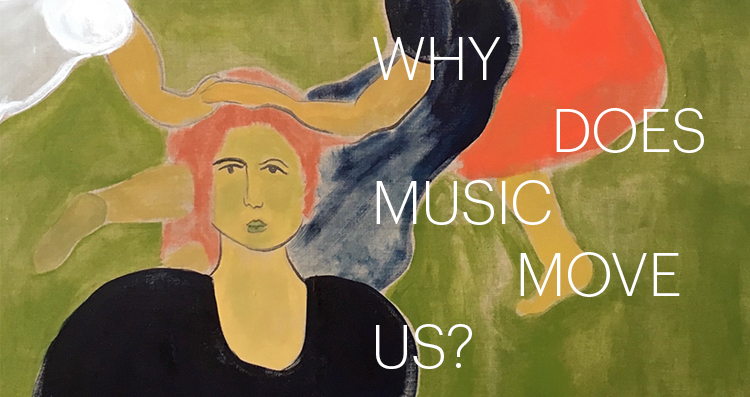This article is drawn from the first issue of Tafel: our new magazine for the musically curious. Offered three times a year, this publication will, we hope, welcome new friends as well as extend the rich conversations we are already having with so many of you. Read the entire first issue here.
Why does music move us?
By Michael Thaut and Veronica Vuong
The Age of Enlightenment was a late seventeenth and eighteenth century philosophical movement that emphasized reason, individualism, and science, moving thinkers away from the authority of the Church. Although it had long been observed that music had the power to convey a variety of emotions, it was during this period that the Doctrine of Affections was developed: the idea that music is capable of arousing specific involuntary emotions within the listener. For example, it was thought that different key signatures expressed different affections. Depending on the composer, E minor could convey grief and contemplation while G major could summon feelings of brilliance and persuasiveness.
Today, we have confirmed through neuroimaging research that music can indeed strongly stimulate and activate the emotional core of the brain. But what we have only recently discovered is that the emotional area of the brain is just one part of a large network of brain regions activated by music.
Whether listening or performing, the brain regions activated by a musical experience involve those that facilitate language, learning, memory, attention, and hearing. In fact, music triggers this network in a way that could be compared to an orchestra. Imagine that our brain’s neurons are the musicians: when activated, they play together in precise timing. The more that these networks are activated, the more practice the musicians get, leading to a more synchronized performance. Music is a powerful tool that we can access to help train our brains. A brain with multiple regions that are strongly connected and communicate effectively with each other is a mentally fit brain. This is true for most people, whether healthy, or suffering from a neurogenerative disorder like dementia, or recovering from a traumatic brain injury.
But the positive affects of listening, performing, or even just imagining music don’t end there. We have discovered that, no matter how you experience it, music consistently activates the regions of the brain that control movement, even if you do not move at all. So when we say that we “are moved by a piece of music,” our brains actually says it is true! Our research has shown that music, especially rhythm, has a very strong ability to re-train mobility in people who have had a stroke or who have Parkinson’s disease.
Emotion and motion then, are not just linguistically linked but are inseparable in the brain when it comes to music. Although the masters of the baroque did not have the scientific knowledge and advanced resources that we have today to confirm the intricate connection between music, emotion, and motion, their ideas and intuition were sound. Music has the power to induce a range of passions, profoundly reflecting and shaping the human experience.
Michael Thaut and Veronica Vuong are the Director and Research Coordinator, respectively, for the Music and Health Sciences Research Collaboratory at the Faculty of Music in the University of Toronto. Michael is a violinist and Veronica is a pianist.
Baroque for the Brain, Tafelmusik’s latest release on the Tafel Media record label is available to stream now on Apple Music, Spotify, and Amazon Music.
Art credit: The Reverie by Darby Milbrath

